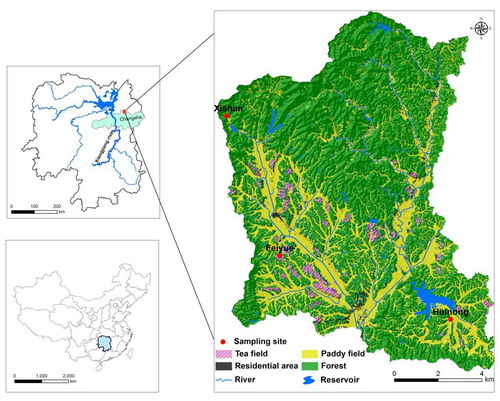Experts Call For Reducing N Emissions in Subtropical Central China
Since the 1980s, atmospheric reactive nitrogen (N) emissions have more than doubled in China due to the rapid economic development and increasing population. According to recent modelling studies, China is now a hotspot for N deposition. Recent N deposition monitoring studies also showed N deposition rates were very high at dozens of observation sites in different regions of China.
With the rapid economic development and the increase of population in recent years, N deposition in the region is expected to be considerably high, which may cause negative effects (e.g., eutrophication, loss biodiversity and acidification) on natural or semi-natural ecosystems. Some recent studies conducted at sites in the subtropical region of China have showed that atmospheric wet/bulk N deposition ranged from 11 to 53 kg N ha-1 yr-1. However, there are still very few dry Ndeposition studies in subtropical central China to date. For a comprehensive evaluation of the impacts of Nron ecosystems in such a region, it is crucial to determine the local levels of both dry and wet N deposition.
Using denuder/filter pack systems, passive samplers and wet-only samplers, a team of researchers from the Institute of Subtropical Agriculture, Chinese Academy of Sciences (ISA) and China Agricultural University quantified the total N depositions at three sites with different land use types (forest, paddy field and tea field) in a 135-km2catchment in subtropical central China.
The researchers found that at the three sampling sites, the annual mean concentrations of total N (the sum of NH4+, NO3- and DON) in rainwater were 1.2 to 1.6 mgN L-1, showing small variation across sites. The annual mean concentrations oftotal N (the sum of NH3, NO2, HNO3, particulate NH4+ and NO3-) in theair were 13 to 18μgN m-3. The high NH3 concentrations in the air were observed at the agricultural sites of tea and paddy fields, indicating significant NH3 emissions from N fertiliser application; and the high NO2 concentrations were found at the upland sites of forest and tea field, suggesting high NO emissions from soils due to high N deposition and high N fertiliser input.
The researchers estimated the annualtotal N deposition for the three sites of paddy field, tea field and forest as 21, 34 and 55 kgN ha-1 yr-1, in which the dry N deposition component contributed to21%, 36% and 63 % of the annual total N deposition,respectively. By using the land-use specific N deposition rates, the estimated annual total N deposition over the catchment was as high as 594 tonnes N yr-1.
“This high N deposition in the catchment may be the main reason for the high N2O emission at a masson pine site and high nitrate content in stream water at the edge of a masson pine forest within the catchment”, said Dr.ShenJianlin ,a researcher from ISA. “To minimise the adverse effects of atmospheric N deposition on natural/semi-natural ecosystems, it is crucial to reduce the reactive N emissions from anthropogenic activities (e.g., N fertiliser application, animal production and fossil fuel combustion) in subtropical central China”, he added.
This research was financially supported by the National Basic Research Program of China (2012CB417105), the 100-Talents Program of the Chinese Academy of Sciences and the National Natural Science Foundation of China (41101247, 41071151).
The study entitled “Atmospheric dry and wet nitrogen deposition on three contrasting land use types of an agricultural catchment in subtropical central China” has been published in Atmospheric Environment (Volume 67, 2013), details could be found at http://www.sciencedirect.com/science/article/pii/S1352231012010692.
 |
| Fig. 1Map of the three sampling sites in the Jinjing catchment. |
Download attachments: